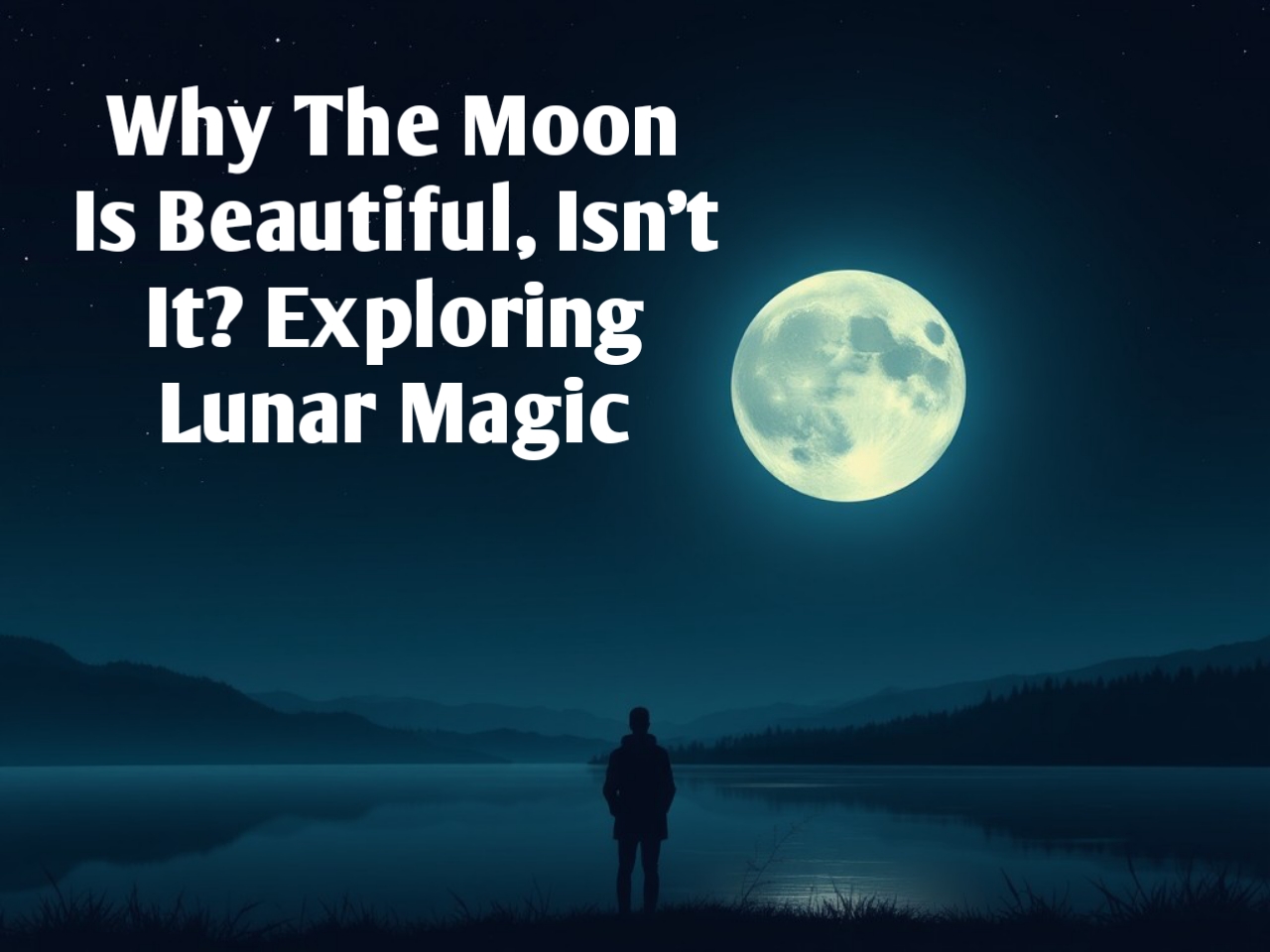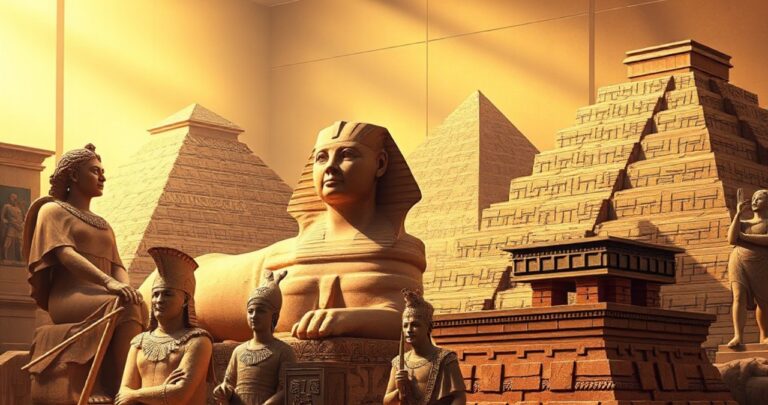Why The Moon Is Beautiful, Isn’t It? Exploring Lunar Magic
The Moon has fascinated humans for centuries, drawing the gaze of poets, astronomers, and dreamers alike. Its serene presence in the night sky and the soft light it casts over the world evoke a sense of wonder and beauty. In this article, we will delve into why the Moon is beautiful, isn’t it? From its captivating phases and role in culture to the science behind its glow, this exploration of lunar magic will reveal how the Moon continues to inspire awe across different facets of human life.
The Enchanting Phases of the Moon
One of the most striking aspects of the Moon is its ever-changing appearance. Throughout each month, the Moon passes through eight distinct phases: new moon, waxing crescent, first quarter, waxing gibbous, full moon, waning gibbous, last quarter, and waning crescent. Each phase offers a different view of the Moon’s surface, giving it an ephemeral quality that heightens its beauty.
The full moon, in particular, is often considered the most beautiful phase, where the Moon’s face is fully illuminated, casting a bright and almost mystical glow over the Earth. The waxing and waning phases, with their crescent shapes, also evoke strong emotions, often associated with growth, change, and cycles. The cyclical nature of the Moon’s phases reminds us of the constant changes in life, and many cultures have tied lunar phases to agricultural, religious, and social practices.
The Moon’s Role in Human Culture
The beauty of the Moon is not just a physical or scientific matter—it is deeply embedded in human culture. From ancient mythology to modern-day poetry, the Moon has always played a significant role in shaping our stories and beliefs. In many ancient civilizations, the Moon was worshipped as a deity, representing femininity, fertility, and the passage of time.
For instance, in Greek mythology, Selene was the goddess of the Moon, driving her chariot across the night sky. In Chinese folklore, the Mid-Autumn Festival celebrates the Moon, with people gathering to admire the full moon and share mooncakes, symbolizing reunion and harmony. The Moon’s influence on literature is equally profound, inspiring countless poems, songs, and stories across time. Its beauty has often been used as a metaphor for love, longing, and melancholy. Consider the famous Japanese phrase, “the moon is beautiful, isn’t it?”—a poetic expression of love that resonates deeply with those who understand its subtlety.
The Moon and Romance: A Timeless Symbol
Few celestial objects have been more closely associated with romance than the Moon. Its presence in the night sky has long been a symbol of love, mystery, and emotional depth. The phrase “the moon is beautiful, isn’t it?” became popularized as a delicate and indirect way of expressing love, famously attributed to the Japanese writer Natsume Sōseki. Rather than stating “I love you” outright, this phrase evokes an emotional connection through shared admiration of the Moon’s beauty.
The Moon’s connection to romance is also evident in literature and art throughout history. Whether it is a couple sharing a moonlit walk or a lone figure gazing at the Moon in quiet contemplation, the Moon has always been a backdrop for scenes of emotional intensity. In many cultures, the full moon is seen as an auspicious time for lovers, with its bright light symbolizing clarity, completion, and fulfillment. Even today, a moonlit night is often synonymous with romantic escapades and intimate moments.
The Science Behind the Moon’s Glow
While the Moon’s beauty can easily be appreciated on a superficial level, its glow also has a fascinating scientific explanation. The Moon does not produce its own light; instead, it reflects the light of the Sun. The surface of the Moon is covered in fine dust and rock, which scatters sunlight in all directions. This reflection gives the Moon its characteristic silvery glow, especially during the full moon when the Sun’s rays hit the Moon’s surface head-on.
The phenomenon of Earthshine, where the dark side of the Moon faintly glows due to light reflected from Earth, also contributes to the Moon’s mysterious beauty. On certain nights, this delicate light can make the Moon appear as if it has an ethereal halo, enhancing its visual appeal. The interplay between light and shadow on the Moon’s surface creates a dynamic, ever-changing spectacle that captivates observers.
The Moon’s Influence on Tides and Nature
The beauty of the Moon goes beyond its visual appeal—it also has a profound influence on the natural world. The gravitational pull of the Moon affects the tides of Earth’s oceans, causing the regular rise and fall of water levels. This relationship between the Moon and Earth’s waters has long been a source of fascination and reverence, as it influences both human activity and marine life.
During full moons and new moons, the alignment of the Earth, Moon, and Sun leads to higher than usual tides, known as spring tides. These heightened tidal movements are not only a scientific marvel but also a reminder of the Moon’s tangible connection to life on Earth. The rhythmic ebb and flow of the tides mirrors the cycles of the Moon, reinforcing its role as a symbol of continuity and change.
The Mystical Allure of a Moonlit Night
There is something undeniably magical about a moonlit night. The soft, cool light of the Moon creates a serene and dreamlike atmosphere that invites reflection and introspection. The sight of the Moon hanging in the sky has the power to still the mind and evoke a sense of peace. This mystical allure of the Moon has been celebrated in various traditions, from ancient rituals to modern stargazing.
The Moon’s light has also been associated with spiritual journeys, with many people finding solace and inspiration under its gentle glow. In various cultures, moonlight is believed to possess healing qualities, offering clarity and renewal. Whether standing by the ocean’s shore or gazing out from a mountaintop, a moonlit night has an almost universal ability to connect people to the vastness of the cosmos and the inner workings of their own minds.
The Dark Side of the Moon: A Source of Mystery
The far side of the Moon, often called the “dark side,” adds to the sense of mystery that surrounds our lunar neighbor. This hemisphere of the Moon is never visible from Earth due to a phenomenon called synchronous rotation, where the Moon’s rotation period matches its orbit around Earth. While not actually dark, the far side remained largely unexplored and unknown until the space age.
The idea of a hidden side to the Moon has captured the imaginations of writers, scientists, and artists. It symbolizes the unknown and the unseen, a place of mystery that lies just beyond our reach. In popular culture, the “dark side of the Moon” is often used as a metaphor for the subconscious, the unseen parts of ourselves, or the mysteries of the universe. This sense of enigma adds depth to the Moon’s beauty, making it not only an object of visual admiration but also a source of philosophical contemplation.
The Moon in Art and Music
The beauty of the Moon has been immortalized in countless works of art and music throughout history. From Vincent van Gogh’s “Starry Night” to Debussy’s “Clair de Lune,” the Moon has served as a muse for artists seeking to capture its ethereal qualities. Its presence in art often evokes feelings of solitude, melancholy, or romantic longing, mirroring the way the Moon’s light touches the world with a quiet, reflective beauty.
In music, the Moon has inspired everything from classical compositions to contemporary ballads. Whether it’s Beethoven’s “Moonlight Sonata” or Frank Sinatra’s “Fly Me to the Moon,” musicians have long turned to the Moon as a source of inspiration. Its haunting glow and association with night have made it a powerful symbol of emotions that are often difficult to express in words.
Modern-Day Moon Gazing: A Timeless Pastime
Despite the advances in technology and the distractions of modern life, moon gazing remains a popular and timeless activity. Whether viewed through a telescope or simply admired with the naked eye, the Moon continues to captivate people of all ages. Amateur astronomers and casual stargazers alike find joy in observing the Moon’s changing phases, its craters, and its light as it moves across the night sky.
In recent years, with renewed interest in space exploration and lunar missions, the Moon has once again become a focus of public attention. The possibility of humans returning to the Moon or even establishing a lunar base has reignited the imagination of many. Yet, even as we look toward the future, the simple act of gazing at the Moon remains as enchanting as it was for our ancestors, reminding us of the beauty that lies beyond our immediate world.
Conclusion: The Moon is Beautiful, Isn’t It?
The Moon’s beauty lies not only in its visual appeal but in its ability to stir the human spirit. Whether through its phases, its influence on nature, or its role in culture, the Moon has a profound and lasting impact on the way we perceive the world. Its gentle light illuminates our nights and our thoughts, offering both a sense of wonder and a source of inspiration.
The question, “The moon is beautiful, isn’t it?” is more than just a rhetorical statement—it is an invitation to pause and reflect on the simple yet profound beauty of the Moon. It invites us to connect with the past, appreciate the present, and dream of the future, all under the glow of our nearest celestial neighbor. The Moon truly is beautiful, isn’t it?
Read Also Our This Post: W5233 Moonlight Way, Elk: Inside the Largest Home Sale in the Area

Kamran Khatri is a versatile writer and editor at ExpressZone.co.uk, bringing fresh perspectives and insightful commentary across a wide range of topics. With a passion for exploring diverse subjects—from technology, business, and finance to lifestyle, travel, and the arts—Kamran aims to inform, inspire, and engage readers through well-researched articles and thought-provoking content.
His work spans multiple categories including health, education, pets, entertainment, real estate, and sustainability, reflecting his commitment to delivering knowledge that connects with everyday life. Whether breaking down the latest trends, sharing practical tips, or highlighting cultural insights, Kamran’s writing combines clarity with creativity.
When he’s not crafting stories for ExpressZone.co.uk, Kamran enjoys keeping up with global developments, exploring innovative ideas, and connecting with readers who share his curiosity about the world.







